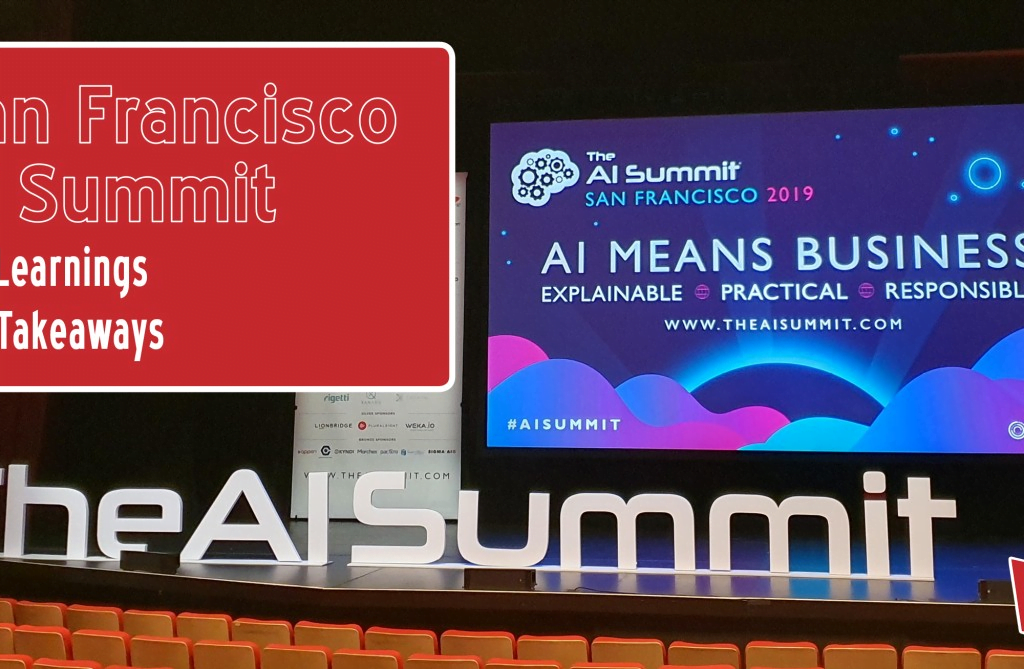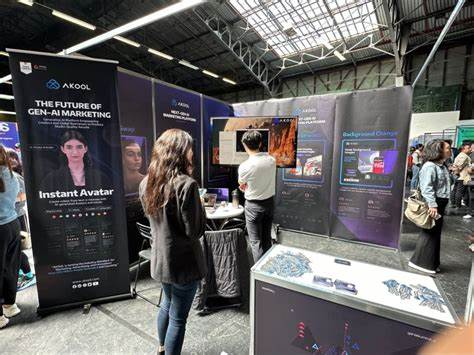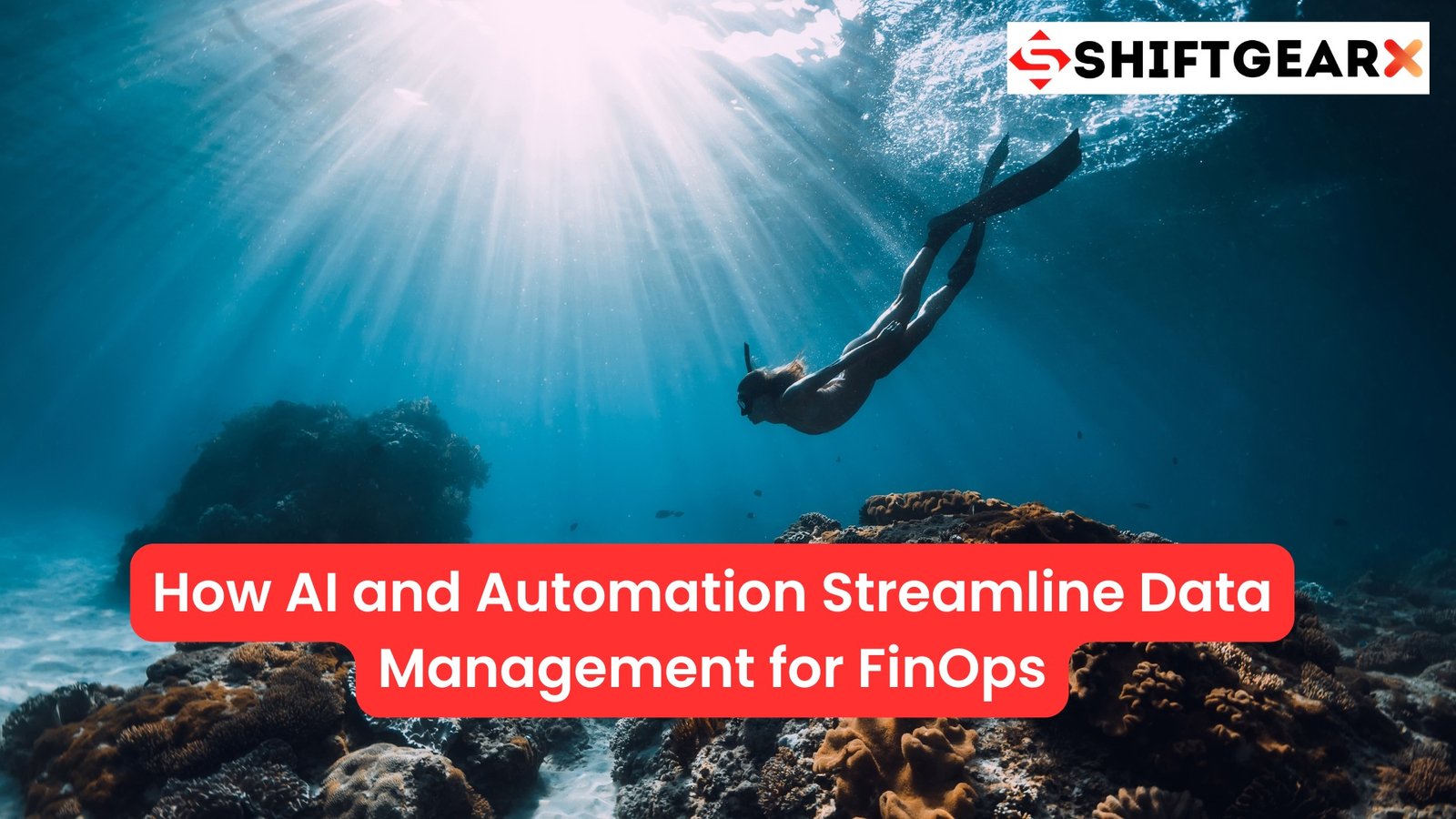Introduction
The GenAI Summit San Francisco 2024 showcased the latest advancements in artificial intelligence and its impact on society. From ethical considerations to breakthrough technologies, here are the key takeaways from this groundbreaking event.
The Surge of Generative AI in Everyday Life
Generative AI is changing the game in our daily interactions with technology. Imagine your smartphone crafting a song that sounds just like your favorite band or a computer program sketching art in the style of Van Gogh. These aren’t scenes from a sci-fi novel; they’re real possibilities with today’s generative AI. This leap in technology isn’t just about novelty. It’s reshaping industries, pushing the boundaries of creativity and innovation.
Have you ever stumbled upon a video clip and wondered if it was real? Thanks to generative AI, creating deepfake videos that blur the line between reality and fiction has never been easier. But it’s not all about creating content that deceives. This technology is a powerhouse for personalization. From tailoring marketing content that speaks directly to you, to customizing educational tools that adapt to your learning style, the possibilities are boundless.
Yet, with great power comes great responsibility. The ease of generating personalized content raises questions. How do we keep this technology safe and beneficial? As we marvel at what generative AI can do, we’re also tasked with ensuring it’s used wisely.
Think about the last time you read an article online. There’s a growing chance it was written by an AI. This shift towards AI-generated content is transforming how information is produced and consumed. It’s opening doors for efficiency and creativity but also inviting us to rethink the role of human creativity in the digital age.
In every facet of everyday life, from the media we consume to the personal experiences we crave, generative AI is making its mark. It’s an exciting time to witness this transformation. The question now is, how will we navigate this new landscape? How will we harness the potential of generative AI to enhance our lives while maintaining our ethical and societal values? These are the conversations taking center stage as we stand on the brink of a new era shaped by generative AI.
Table 1: The Surge of Generative AI in Everyday Life
| Aspect | Details |
|---|---|
| Impact on Daily Interactions | Generative AI enhances interactions with technology, creating deepfake videos and personalized content. |
| Ethical Considerations | Ensuring responsible AI use to prevent misuse and maintain ethical standards. |
| Transformation of Media Consumption | AI-generated content reshapes information production and consumption, prompting a rethinking of human creativity. |

Ethical Considerations Take Center Stage
As we integrate AI deeper into our lives, the spotlight on ethics grows brighter. The questions of privacy, bias, and accountability are more than just buzzwords; they are critical concerns that demand our immediate attention. Imagine an AI system making decisions that affect your life, from job applications to loan approvals. Now, think about the data it uses. Is it fair? Is it biased? The answers to these questions shape the very fabric of our society. This was a topic which had a sizable discussion during the GenAI Summit San Francisco 2024.
In the realm of AI, transparency isn’t just a nice-to-have; it’s a must-have. Organizations are now tasked with not just developing AI but doing so in a way that’s ethical and transparent. This means opening up the black box of AI algorithms for scrutiny, ensuring they don’t reinforce existing biases or create new ones. But it’s not just about preventing harm. It’s about actively doing good, ensuring AI serves everyone equally, enhancing lives without infringing on privacy or autonomy.
Table 2: Ethical Considerations Take Center Stage
| Aspect | Details |
|---|---|
| Privacy and Bias | Addressing fairness and bias in AI decision-making processes. |
| Transparency | Ensuring transparent AI algorithms to prevent harm and promote equity. |
| Accountability | Defining responsibility in AI-driven decisions to ensure mechanisms for addressing issues. |
Bias in AI isn’t a new topic, but its implications are far-reaching. From facial recognition software with higher error rates for certain demographics to AI recruitment tools favoring one gender over another, the examples are many. Addressing these requires a concerted effort from developers, policymakers, and users alike. It’s about building systems that reflect the diversity of the world they serve.
Accountability is another cornerstone of ethical AI. When AI systems make decisions, who is responsible? Pinning down accountability ensures that when things go wrong, there are mechanisms in place to address the issue, learn from it, and prevent future occurrences.
In sum, as AI weaves its way into the fabric of our lives, its ethical implications cannot be an afterthought. The dialogue around ethics in AI is vital, pushing us to ask hard questions, seek better answers, and strive for a future where technology amplifies our humanity without compromising our values.

The Rise of AI-Generated Content
AI-generated content is becoming more common, shaping the future of how we produce and consume media. This shift brings a host of new opportunities and challenges for creators. Imagine having the power to produce a novel, compose music, or create a marketing campaign, all with the help of AI. This is no longer a distant dream but a tangible reality. The GenAI Summit San Francisco 2024 focused multiple sessions on this topic.
For content creators, AI offers a toolset that can significantly enhance productivity and creativity. Writers can draft articles at record speed, musicians can explore new melodies, and marketers can generate personalized advertisements like never before. This wave of innovation is opening doors to uncharted territories in content creation.
However, this new era also presents its fair share of hurdles. The main challenge lies in maintaining the authenticity and originality of content. With AI’s ability to generate articles, stories, and even artwork, distinguishing between what’s genuinely human-made and what’s not becomes increasingly difficult. This blurs the lines of copyright and originality, raising questions about the value of human creativity in the digital age.
Moreover, as AI-generated content becomes more prevalent, the potential for misuse grows. The ease of creating deepfake videos or generating fake news highlights the need for stringent ethical standards and regulatory measures. Content creators must navigate these waters carefully, ensuring their work remains ethical and true to their audience’s trust.
Another consideration is the impact on employment within creative industries. As AI takes on more of the content creation process, professionals must adapt, learning to coexist with AI, leveraging it as a tool rather than viewing it as a competitor.
In essence, the rise of AI-generated content is reshaping the landscape of media and creativity. It’s a thrilling time for innovation, yet it demands a thoughtful approach to balance technological advancement with ethical considerations and the irreplaceable value of human touch.
Table 3: The Rise of AI-Generated Content
| Aspect | Details |
|---|---|
| Opportunities for Creators | AI enhances productivity and creativity across fields such as writing and marketing. |
| Challenges | Maintaining content authenticity, managing ethical concerns, and addressing employment impacts. |

AI in Healthcare: Promises and Challenges
AI is transforming healthcare, offering new ways to diagnose diseases, personalize treatments, and care for patients. Imagine a world where your doctor uses AI to predict health issues before they happen, tailoring care precisely to your needs. This future is closer than you might think. AI systems are already making strides in interpreting medical images, identifying patterns that may elude the human eye. They’re aiding in the discovery of new drugs, speeding up a process that traditionally takes years.
Yet, as we navigate this exciting terrain, we encounter hurdles. One major concern is data privacy. Your medical records contain sensitive information. How do we ensure they’re kept safe in the hands of AI? The integrity and security of patient data are paramount. Any breach could have profound implications, eroding trust in healthcare systems.
Regulatory compliance presents another challenge. Healthcare is among the most regulated sectors. As AI technologies evolve, so must the regulations that govern them. This ensures innovations not only advance care but also protect patients. Achieving this balance requires ongoing dialogue between technologists, regulators, and healthcare providers.
Ethical concerns also loom large. Decisions about patient care are deeply personal. Can AI truly understand the nuances of human health and make decisions in the best interest of patients? Ensuring AI applications respect patient autonomy and ethical principles is crucial.
Despite these challenges, the potential of AI in healthcare is undeniable. It promises to enhance patient outcomes, streamline operations, and unlock insights from the vast amounts of data generated daily. The journey ahead involves tackling these obstacles head-on, ensuring the integration of AI into healthcare benefits everyone, without compromising privacy, ethics, or regulatory standards. As we move forward, the collaboration between AI experts, healthcare professionals, and policymakers will be key to unlocking this technology’s full potential.
Table 4: AI in Healthcare: Promises and Challenges
| Aspect | Details |
|---|---|
| Diagnostic and Treatment Innovations | AI aids in disease prediction, medical image interpretation, and personalized treatment plans. |
| Data Privacy | Ensuring patient data security and maintaining trust in healthcare systems. |
| Regulatory Compliance | Adapting regulations to keep pace with AI advancements while protecting patient rights. |

Bridging the AI Talent Gap
In the world of artificial intelligence, there’s a pressing issue that’s holding back progress: the AI talent gap. This gap isn’t just a small hiccup; it’s a wide chasm that’s keeping industries from fully harnessing the power of AI technologies. Companies are scrambling to find skilled professionals who can navigate the complexities of AI, from data scientists to ethical AI specialists. So, what’s being done to address this challenge?
Firstly, education is at the forefront of closing this talent gap. Universities and online platforms are launching more AI-focused courses than ever before. These programs are designed not only to teach the technical skills needed to work with AI but also to instill an understanding of the ethical implications of AI technology. But education alone isn’t enough. We need hands-on experience to truly prepare the workforce for the demands of the AI industry.
Enter industry partnerships. Companies are teaming up with educational institutions to provide practical experience through internships and apprenticeships. This collaboration ensures that learners aren’t just getting theoretical knowledge; they’re also getting a taste of real-world AI challenges and solutions.
But there’s a critical piece of the puzzle that’s often overlooked: diversity. The AI field desperately needs a diverse workforce to avoid biased algorithms and to create inclusive technologies. Efforts are being made to encourage underrepresented groups to enter the AI field, through scholarships, mentorship programs, and targeted recruitment efforts.
We’re facing a significant challenge, but it’s not insurmountable. By prioritizing education, hands-on experience, and diversity, we’re taking steps toward bridging the AI talent gap. It’s a complex journey, but one that’s essential for the future of technology and society. As we forge ahead, the goal is clear: to cultivate a skilled, diverse workforce that’s ready to drive the next wave of AI innovation.
Table 5: Bridging the AI Talent Gap
| Aspect | Details |
|---|---|
| Educational Initiatives | Expanding AI-focused courses and hands-on experience through industry partnerships. |
| Diversity | Encouraging diverse participation in AI to prevent biases and foster inclusive technologies. |
| Practical Experience | Providing internships and apprenticeships to prepare a skilled workforce for the AI industry. |

The Importance of Data Privacy in AI
Navigating the complexities of data privacy in the realm of AI isn’t just about keeping personal details secure; it’s a crucial step towards earning and maintaining trust. As AI systems process vast amounts of personal data to learn and make decisions, ensuring this information is protected is paramount. But how do we balance the drive for innovative AI applications with the need to safeguard individual privacy?
One approach is through the implementation of robust data encryption methods. These methods ensure that data, even if intercepted, remains unreadable and useless to unauthorized parties. Additionally, the principle of data minimization plays a vital role. This means collecting only what is necessary. By limiting the amount of data gathered, the risk of sensitive information being exposed is significantly reduced.
Another key aspect is transparency. Companies must be clear about how they’re using personal data. This transparency isn’t just about legal compliance; it’s about building a relationship of trust with users. When people understand how their data is being used and see the measures in place to protect it, their confidence in the technology grows.
Consent is also a cornerstone of data privacy. Users should have control over their personal information, including the right to opt in or out of data collection. This empowers individuals, giving them a say in how their data is used.
Finally, regular audits and updates to privacy policies and practices ensure that data protection measures stay ahead of potential threats. As AI technologies evolve, so too must our approaches to data privacy.
In this era of rapid AI advancement, respecting and protecting personal data is not just a regulatory requirement; it’s a critical component of ethical AI development. By prioritizing data privacy, we’re not only safeguarding individual rights but also fostering a culture of responsibility and trust in the digital age.
Table 6: The Importance of Data Privacy in AI
| Aspect | Details |
|---|---|
| Robust Data Protection | Implementing encryption and data minimization to safeguard personal information. |
| Transparency and Consent | Building trust through clear data usage policies and user control over personal data. |
| Regular Audits | Ensuring privacy measures evolve with AI advancements to stay ahead of potential threats. |

Breakthrough AI Technologies Unveiled
At the GenAI Summit in San Francisco 2024, attendees were treated to a showcase of AI technologies that promise to change the game. Innovations ranged from quantum computing breakthroughs to the latest in neural network developments. These are not just technical achievements; they represent new paths to solving long-standing issues across industries.
Quantum computing, for instance, is poised to make data processing exponentially faster. Imagine being able to solve complex problems in seconds, problems that currently take our best computers days or even years to crack. This leap could revolutionize everything from drug discovery to climate modeling.
Neural networks, on the other hand, are getting smarter and more efficient. They’re learning to understand and interpret the world in ways that mimic the human brain, but at a scale and speed that humans can’t match. This could lead to AI systems capable of diagnosing diseases from medical images with a level of accuracy and speed unimaginable today.
But it’s not just about speed and efficiency. Some of the unveiled technologies focused on making AI more accessible and understandable. Tools that simplify the creation and training of AI models could democratize AI, putting powerful technology in the hands of more people. This has the potential to spur innovation from unexpected quarters, fostering a more inclusive approach to problem-solving.
Also noteworthy were advances in AI ethics and safety. Innovations in explainable AI (XAI) mean that AI decisions can now be more transparent and understandable, addressing one of the key concerns around the deployment of AI systems in sensitive areas.
The technologies presented at the GenAI Summit are just the tip of the iceberg. They signal a future where AI can not only augment human abilities but also tackle problems that have been out of our reach. This glimpse into the future of AI technology at the summit left attendees inspired and eager to explore the possibilities these innovations could unlock.
Table 7: Breakthrough AI Technologies Unveiled
| Aspect | Details |
|---|---|
| Quantum Computing | Enhancing data processing capabilities, revolutionizing problem-solving across industries. |
| Neural Networks | Improving AI’s understanding and interpretation of the world, achieving human-like efficiency. |
| Accessibility and Ethics | Making AI more accessible and understandable, with innovations in explainable AI (XAI). |

Building a Sustainable Future with AI
AI isn’t just transforming technology; it’s revolutionizing our approach to sustainability. It offers a unique set of tools for tackling environmental challenges. From optimizing energy use in homes and businesses to predicting climate patterns, AI can lead us to smarter, greener choices. Think about the massive amounts of data we can analyze now. AI helps sift through this information, identifying trends and solutions that humans alone might miss. For example, it’s improving agriculture by monitoring crop health in real time, reducing the need for water and pesticides.
But the benefits don’t stop at agriculture. AI is also redefining waste management. By analyzing patterns in waste generation, it can optimize recycling processes and reduce landfill use. Imagine cities that can efficiently manage waste because AI helps them understand exactly what is being thrown away and how it can be reused or recycled.
Then there’s energy consumption. AI algorithms can manage and reduce energy use in buildings, making them more efficient and less impactful on the environment. This is critical in our fight against climate change, as buildings are a major source of carbon emissions.
Moreover, AI aids in conservation efforts. It tracks endangered species, monitors their habitats, and even predicts areas where they might be at risk. This technology empowers conservationists to take proactive steps in preserving biodiversity.
In essence, AI equips us with the ability to make informed decisions that benefit our planet. By leveraging AI, we’re not just optimizing for efficiency; we’re also choosing a path that respects and preserves our natural resources. The potential for AI to support sustainability is vast, opening up exciting possibilities for a healthier planet.
Table 8: Building a Sustainable Future with AI
| Aspect | Details |
|---|---|
| Optimizing Energy Use | AI helps reduce energy consumption in homes and businesses, contributing to sustainability. |
| Agricultural Improvements | AI improves crop health monitoring, reducing water and pesticide use. |
| Waste Management | AI optimizes recycling processes and reduces landfill use by analyzing waste generation patterns. |

The Role of Government in AI Regulation
The balance between innovation and ethical use of AI is delicate. Governments are stepping in to navigate this terrain. They’re not just bystanders; they’re active participants. By working closely with tech companies and academic experts, governments are crafting rules that encourage progress while protecting us.
Imagine a future where AI technologies are both groundbreaking and safe. That’s the goal. Regulations are being designed to prevent misuse of AI, like invasion of privacy or biased decision-making. It’s not about stifling creativity but ensuring advancements benefit everyone.
For example, consider self-driving cars. They’re a marvel of AI, but they also raise questions about safety and liability. Governments are working to set standards that keep the roads safe without slamming the brakes on innovation.
Transparency is another area where governments are focusing. They want companies to be clear about how AI systems make decisions. This transparency builds trust among users, making sure people understand and feel comfortable with the AI technologies they use every day.
Engagement with the public is also crucial. Governments are initiating conversations about AI’s impact, listening to concerns, and adjusting policies accordingly. It’s a dynamic process, one that evolves as quickly as the technology itself.
Partnerships play a key role here. By collaborating with international bodies, governments ensure that AI regulations align globally. This avoids a patchwork of rules that could confuse users and hinder companies.
In essence, governments are setting the stage for AI’s future. They’re not just reacting to developments; they’re actively shaping how AI grows, ensuring it serves the common good. This role is pivotal, making sure AI’s journey forward is both innovative and inclusive.
Table 9: The Role of Government in AI Regulation
| Aspect | Details |
|---|---|
| Balancing Innovation and Ethics | Governments set standards to prevent misuse of AI while fostering innovation. |
| Transparency and Engagement | Governments promote transparency in AI decisions and engage the public in AI discussions. |
| Global Collaboration | International partnerships ensure aligned global standards and ethical guidelines for AI use. |

Collaboration Across Borders
In today’s interconnected world, working together across borders is not just beneficial; it’s a necessity, especially in the realm of artificial intelligence. The GenAI Summit San Francisco 2024 shone a light on the power of global collaboration, emphasizing how it propels the AI field forward. When experts from various countries and backgrounds unite, they bring diverse perspectives and unique insights. This diversity is crucial for innovation.
Imagine researchers from one country developing an AI model that can predict natural disasters with unprecedented accuracy. Now, imagine if these insights were shared internationally. The impact could be monumental, from saving lives to protecting economies. This is the potential of cross-border collaboration in AI.
Yet, it’s not only about sharing successes but also challenges. Countries facing similar hurdles in AI adoption can learn from each other’s experiences, avoiding pitfalls and accelerating progress. Such synergy not only speeds up the development of AI technologies but also ensures they are more inclusive and equitable.
Furthermore, international partnerships are vital for setting global standards and ethical guidelines for AI use. In a world where AI technologies cross borders through the internet, having a unified approach to AI ethics and regulations is essential. It helps prevent a fragmented global landscape where AI is used responsibly in one region but not in another.
The discussions at the GenAI Summit underscored a collective vision: to harness AI’s potential responsibly and inclusively. By fostering an environment where knowledge and resources are shared freely across borders, we’re not just advancing AI; we’re ensuring it benefits humanity as a whole. This spirit of collaboration is what will drive the future of artificial intelligence, making it a tool for global good.
Table 10: Collaboration Across Borders
| Aspect | Details |
|---|---|
| Global Innovation | Cross-border collaboration brings diverse perspectives and unique insights to AI development. |
| Shared Challenges | Countries can learn from each other’s AI adoption experiences, avoiding pitfalls and accelerating progress. |
| Unified Standards | International partnerships set global standards and ethical guidelines for responsible AI use. |
I hope you enjoyed reading this article. To stay updated on future articles, subscribe to our website, Shift Gear X. Also, for professional consulting advice, feel free to visit Shift Gear.









